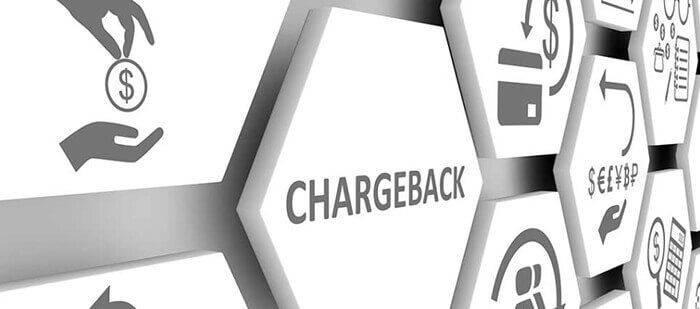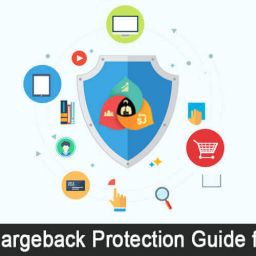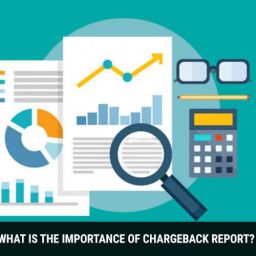
Recognize How They Look Like & Their Effect On Your Business
Let’s see it: chargebacks are the scariest nightmare. No matter how we divide them.
They’re the ruler, sudden threat, and always end up costing higher money than they should. The saddest part? There are few solid answers available as to what to do about them.
Your best dodge against the most common chargeback types is to go on the offensive and save the business. Before you can do that, though, your first thing should be to understand where your chargebacks are keeping coming from.
In this article, we’ll discuss the three basic types of chargebacks by their source. We’ll see why they happen, how they affect your business, and what you can do to prevent them.
3 Types of Chargebacks: What They Look Like & How They Affect Your Business
Majorly chargebacks are divided into three categories:
- Criminal Fraud
- Friendly Fraud
- Merchant Error
“But wait a sec” you might be thinking, “That there were lots of different chargeback sources out there?!”
You’re right. There are N numbers of different chargeback reason codes which are widespread across the different card networks, which leads to the trigger of different chargebacks.
There are a lot of parties involved in the chargeback process. Banks, processors, merchants, card networks, and third-party vendors all have a role. You also have to consider in-house or can say domestic and non-domestic financial laws, data regulations, and more. As a result, it can be tough to pin down correct data on your chargeback sources.
You might fall back on reason codes to try and describe the dispute on file. That’s not a bad place to commence but remember: reason codes can’t give you a full picture always.
Instead of introspecting chargebacks according to reason code, it’s best to try and section them into one of three basic chargeback types: merchant error, criminal fraud, and friendly fraud. Now, let’s break them and get knowledge about it.
Criminal Fraud
Let’s talk about the most obvious chargeback type.
Criminal fraud occurs when a third party is a fraudster and uses stolen data to complete a purchase process. There are a lot of different techniques they can establish to accomplish this, like account takeover or synthetic identity theft. The through-line is such a bad actor using someone’s information without taking the permission of the concerned person.
Some Of The Examples of Criminal Fraud Chargeback:
- A criminal steals a debit/ credit payment card and uses it.
- A criminal creates a fake card and utilizes it in a non-EMV card-present purchase.
- A criminal uses stolen information to mimic an existing cardholder.
- Criminal understands a valid user’s account and makes purchases on their behalf.
- A criminal utilizes stolen information to create a fake identity.
Process after a Criminal Fraud Chargeback?
If you get bold with a criminal fraud chargebacks ball, there is nothing much you can do to fight the claim. If you conducted the transaction without authorization, you’ll be responsible.
You will lose the sales income, plus any merchandise that we have shipped, as well as other fees like shipping and interchange. You’ll also be encountered with a chargeback fee (basically between $20-100 per transaction).
The only option to protect from after the transaction is to place chargeback alerts. These notifications will give you prior warning of a delayed or pending dispute, letting you refund the buyer and neglect a chargeback. You still lose the sales revenue, but you can avoid the fees and other costs included with chargebacks.
![]()
Email us anytime!
Email customer service 24/7
![]()
Call us anytime!
Reach customer care 24/7 at +1 (888) 901-8653
We also suggest that you take this as a lesson which will turn into an opportunity later. Diagnose the main source or reason for the chargeback, try to adjust your fraud detection strategy, and tell your staff to upgrade the way to look for it to identify and block transactions like this in the future.
How to Prevent Criminal Fraud Chargebacks
The amazing and best approach to prevent this chargeback type is to have a multilayer fraud management strategy. This means using multiple fraud detection tools that work altogether and complement each other to give you a more detailed and deep impression of the transaction.
You can then install fraud scoring, which screens each transaction and rates the purchase according to the risk of potential fraud associated with it. You have the option to manually look at the purchases that get flagged by fraud scoring or reject them straight away
Merchant Error Chargebacks
This is sort of twisted and tricky than a straightforward attack. These chargebacks are a by-product of ill business practices, rather than any poisonous intent from a third party.
Internal mistakes can be very tough to identify. They can be even more difficult to remedy because you have to examine your operations and look into your work process and try to pick out things that might cause these types of chargebacks.
The issue could be something as simple as a billing descriptor that needs to be used effectively, or, it could be something more serious that affects many areas of the business without your knowledge.
Examples of Merchant Error Chargeback:
- Vague or inaccurate billing descriptors
- Processing the wrong amount during payment due to lack of presence
- Jumbling shipping delays or tracking mix-ups
- Workers’ negligence can lead to shipping the wrong item, or a defective item
- Inaccurate details about the product
What Happens After a Merchant Error Chargeback?
Just like in criminal fraud cases, there’s nothing you can do to protect yourself once a claim is procured inside the business. If you did commit some error that led to a dispute, then you are responsible for the chargeback.
Again, the same goes here you lose the sales revenue and merchandise and get trashed with a chargeback fee. Like with criminal fraud, using chargeback alerts can help you avoid the ill effects of this chargeback type. However, you should have flexible policies and practices in response to any merchant error dispute, as these chargebacks are 100% preventable.
Preventing Merchant Error Chargebacks
These chargebacks all come from internal system errors and procedural missteps. So, by taking a constant look at your operations, you should be able to figure out the problematic areas and take action to resolve issues.
We suggest a full compliance review to identify chargeback sources and help develop a strategy to utilize the processes.
Friendly Fraud Chargebacks
Now we come to the real ‘big trouble makers’ in the chargebacks game.
Chargebacks were invented to help tip the scales back into the cardholders’ favor by blessing them the power to fight back if a product or service wasn’t as expected. Nowadays, a cardholder can simply click a few buttons and start a dispute through their banking app. This has started to cause a lot of problems and has been a trend nowadays.
81% of cardholders accepted filing a chargeback out of convenience. In their mind, it was easier and feasible to contact the bank for a chargeback than call the merchant for a refund. This is a perfect example of friendly fraud.
Examples of Friendly Fraud Chargeback:
- Shipping took longer than expected arrival date, so the cardholder filed a dispute
- The cardholder ordered an item by his/her silly mistake but failed to return it
- A child or spouse purchased without the cardholder’s knowledge leads to surprise to the cardholder.
- The cardholder planned a fake act to file a chargeback and “get something for free”
- The cardholder didn’t want to deal with the merchant for a refund.
Preventing Friendly Fraud Chargebacks
Let’s be straightforward here: you can’t have the full stop on friendly fraud chargebacks completely. These types of chargebacks are trickier to identify, and even the toughest task to prevent effectively. This is because it only really “becomes” fraud the moment the cardholder commences a dispute.
The best approach here is to discard transaction dispute triggers, including all those caused by merchant error and criminal fraud. By discarding two of the three sources of chargebacks, the only thing left is to dispute friendly fraud through representment.
Over time, this will help retrain consumer behavior. They will be probably less likely to commit friendly fraud, which will help prevent future incidents and cause huge and major damage to the firm.
After Story of a Friendly Fraud Chargeback?
Unlike merchant error or criminal fraud chargebacks, you actually can fight for your right and try to recover your money after a friendly fraud chargeback. This whole process is known as representment.
Re-presentment means “re-presenting” the transaction to the bank. This must be accompanied by compelling evidence, as well as a strong chargeback rebuttal letter to help explain your case.
Expert Help to Fight Every Chargeback Type
It’s easy to say that there are just three chargeback types. The sad part is determining which source is to blame for your chargebacks.
There’s mind-blowing news, though: you can take the guesswork out of chargeback management and start discarding chargebacks by their true source.
At Chargeback Expertz, we use Intelligent Source Detection technology to identify chargeback triggers. We apply a patented combination of machine learning and human forensics to highlight chargeback sources. Based on this graph, we can help you create it much better, more effective strategy to stop chargeback today.




